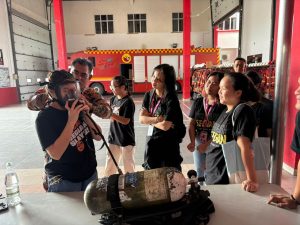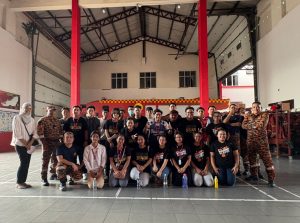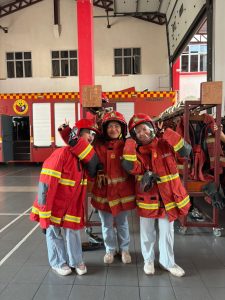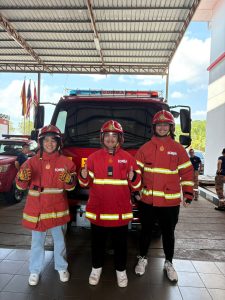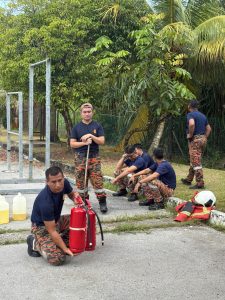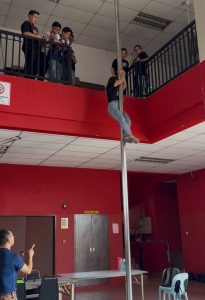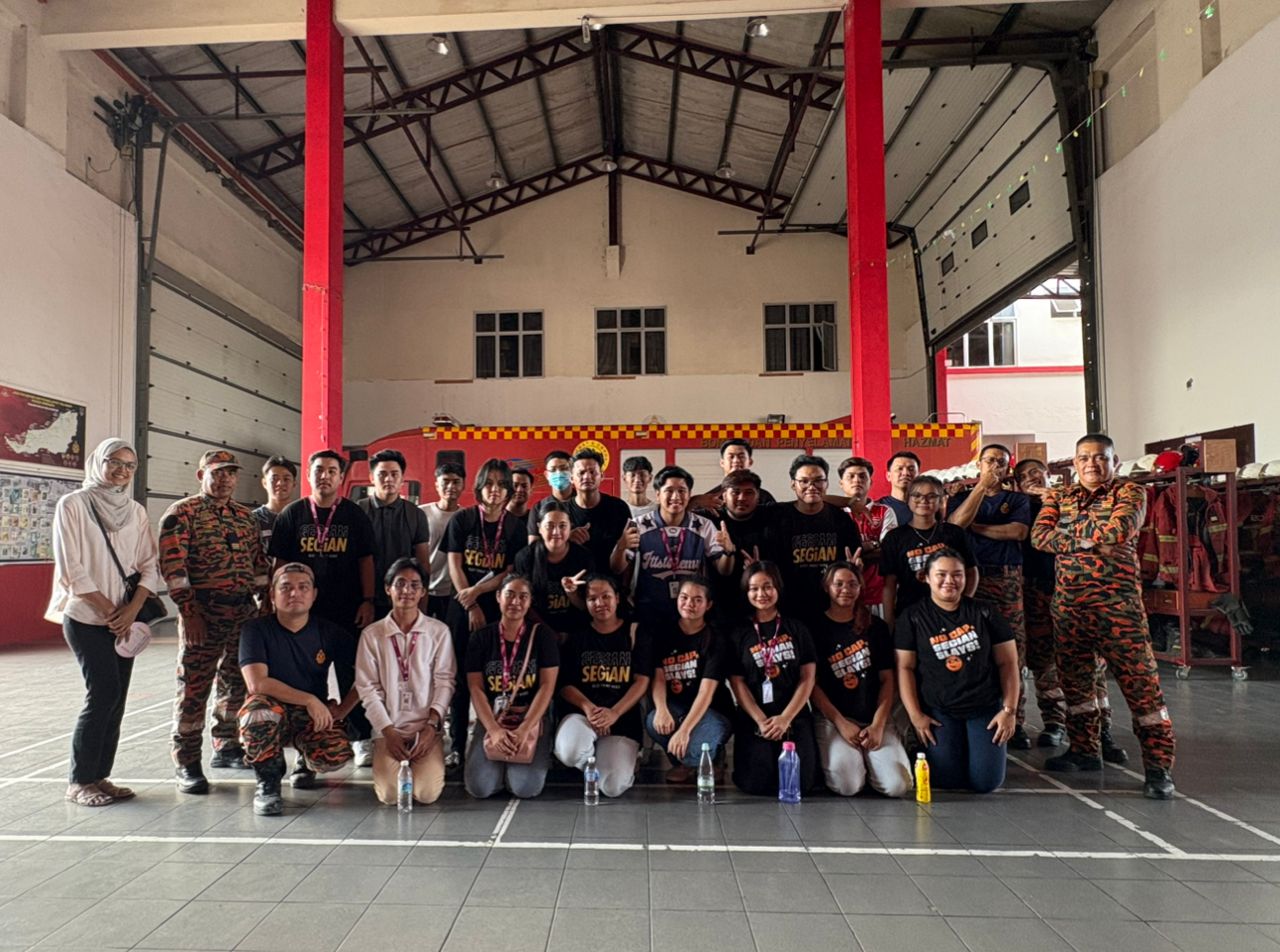Students from the Diploma in Occupational Safety and Health (DIOSH) programme gained a powerful real-world learning experience through an educational visit to the Tabuan Jaya Fire Station. The visit was designed to strengthen their understanding of fire safety and emergency response by allowing them to learn directly from the frontliners who protect the community every day.
The session began with an introduction to the responsibilities carried by the Fire and Rescue Department and the importance of readiness in emergency situations. Officers explained how fire response teams assess risks, prioritise actions and coordinate their roles under pressure. This early exposure helped students appreciate that fire safety is not just a technical requirement but a leadership responsibility rooted in discipline, teamwork and quick decision making.
Students then observed practical demonstrations on the correct handling of fire extinguishers, essential firefighting techniques and the steps involved in safe rescue operations. Seeing real emergency procedures in action allowed students to understand how fire behaviour changes in different situations and how response strategies must adapt instantly. These demonstrations gave them a clearer picture of the judgment and composure required in high-risk environments.
The group also learnt about the equipment used in fire response and the reasons behind each safety protocol. Officers emphasised that every procedure, from equipment maintenance to evacuation planning, is designed to protect lives and reduce the impact of hazards. Students used the opportunity to ask questions, clarify scenarios and explore the realities of managing emergencies beyond what is taught in the classroom.
For many participants, learning from frontliners made the principles of fire safety more meaningful. It helped them understand that the role of a safety practitioner extends far beyond reporting hazards. It involves leading others, responding calmly under pressure, understanding the science behind fire and maintaining a strong sense of responsibility toward the well-being of others.
The visit successfully strengthened the students’ professional identity as future safety leaders. By observing real emergency work, they gained a deeper appreciation for the values that define strong safety cultures, including vigilance, discipline, preparedness and respect for risk.
This activity supports the following United Nations Sustainable Development Goals:
SDG 3 Good Health and Well-being
SDG 4 Quality Education
SDG 13 Climate Action
